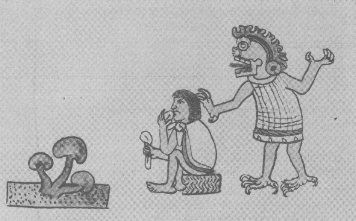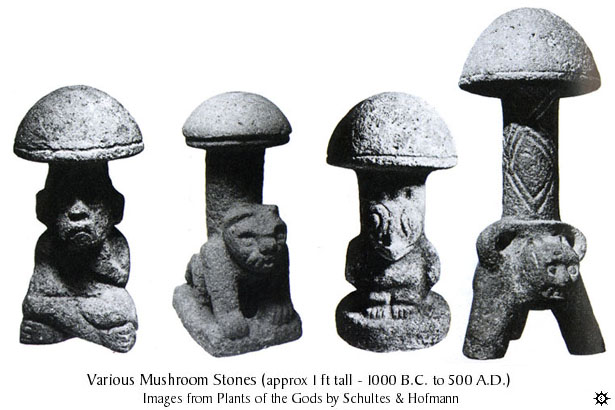Introduction to Psilocybin – Effects of Psilocybin – History of Psilocybin
Hallucinogenic mushrooms containing psilocybin have probably existed longer than the human race. Throughout history, ancient pictures, carving, and statues have been seen, showing the importance of these fungi to ancient tribes. In Central and South America, use of psilocybin mushrooms was common religious practice until the arrival of Spanish settlers, who were intent on spreading the Catholic faith, strictly prohibited their use. For Indians the fungi are known as sacred mushroom and historically, it is considered entheogen, propelling them on a religious path to the spirit world.
-
Mushroom art and sculptures that depicted motifs under the cap of a mushroom were found in times as early as 1000-500 BC.
-
The purpose of these sculptures and artifacts was not certain, but it is speculated that the stones had religious meaning
-
In sixteenth century Europe alcohol was widely known and used, and even though used symbolically in religious service, served no real purpose in religion.
-
During the Spanish conquest of Central America stories began to come back telling of the use of inebriants in religion.
-
Three substances were mention, one of which was a sacred mushroom called teonanacatl, as well as peyote and the morning glory flower
-
The Codex Vienna Mixtec manuscript that dated back to thirteen century depicted the ritual use of the sacred mushrooms by the Mixtec Gods.
-
The God known as Seven Flowers was the Mixtec God of hallucination, especially in regards to mushrooms, and he was often depicted carrying a pair of mushrooms in his hands
-
Sadly with the conquest of Central America and the integration of Catholicism into the culture these mushrooms were nearly all but lost (Lincoff & Mitchell, 1977).
At the beginning of the twentieth century interest in hallucinogenic plants reappeared.
- The first hallucinogen to be confirmed as such was the peyote cactus.
- At first there was little evidence that morning glory or mushrooms were hallucinogenic, and it was assumed that peyote could be attributed as the reason for all early accounts.
- Just prior to World War II it was found that extracts of the morning glory seed had a depressive effect on the nervous system and ethnobotanists Schultes and Reko discovered these seeds were still in use by local “doctors” in Mexico.
- They traveled to Mexico and sought out these mushrooms and Schultes published a report of his findings in Harvard University Botanical Museum Leaflets in 1939.
This is when and why the use of hallucinogenic fungi was rediscovered
-
After hearing of Schultes and Reko and their finding the hallucinogenic mushrooms in Mexico the ethnomycologists Wasson and Heim went to Central America to investigate the use and effects of these “magic mushrooms”.
-
They published their findings in Life magazine in 1957 their use of the term “magic mushroom” made the term a household name.
-
These mushrooms became a symbol of counterculture in the late 1960’s and 19670’s and became widely used in the United States and Britain. There are no other types of mushrooms that are capable of reflecting the society, culture, and its values the way these mushrooms did at that time. These psilocybin mushrooms lead to the discovery of LSD, a man made chemical hallucinogenic.
-
Today there is still fairly high usage of the drug, and a recent Danish study reported that about 7% of all students have had an experience with psilocybin mushrooms.
-
In another study of drug abusing teenagers, 26% reported using “magic” mushrooms
-
Psilocybin mushrooms are now a Schedule I illicit substance in America, under the Controlled Substances Act, making it completely illegal


